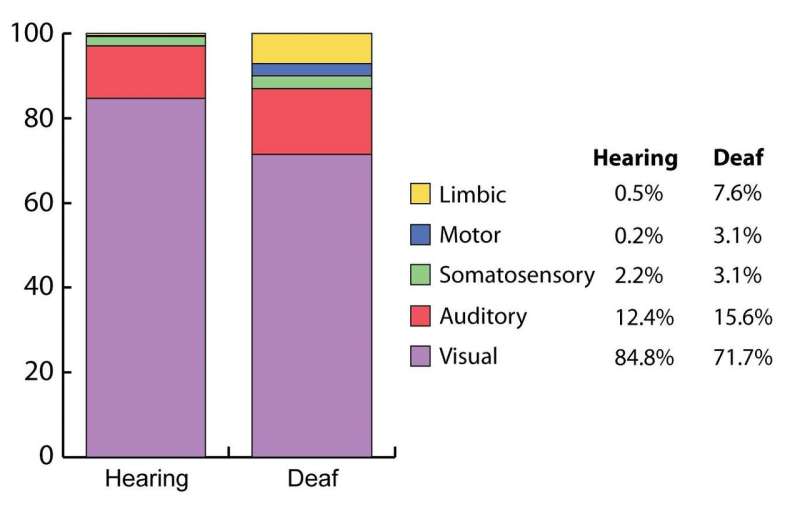Reorganization of brain outputs in deaf cats

Cats deaf from an early age have increased outgoing connections from the auditory cortex to a midbrain region responsible for directing the animal to a particular location in its environment. The study, published in JNeurosci, is the first to examine the reorganization of outputs from the sensory cortex following hearing loss.
Although mammals are able to see and hear early in life, the neural machinery that supports these senses develops slowly in response to input from the outside world. Such experience-dependent plasticity helps to fine-tune the animal's perceptual abilities to its environment. Without this input, the brain regions that would normally process the deprived sense are instead recruited for other purposes.
Compared to hearing cats, Blake Butler and colleagues found that cats made deaf in the first weeks of life had reduced connections from the anterior ectosylvian sulcus of the sensory cortex to the superior colliculus (SC) of the midbrain. However, the deaf cats had greater connections from other auditory areas to the SC, resulting in an overall larger input. Connections from limbic brain regions to the SC were also increased in deaf cats, which may support enhanced information processing to complement the intact senses.
More information: Modified origins of cortical projections to the superior colliculus in the deaf: Dispersion of auditory efferents, JNeurosci (2018). DOI: 10.1523/JNEUROSCI.2858-17.2018















